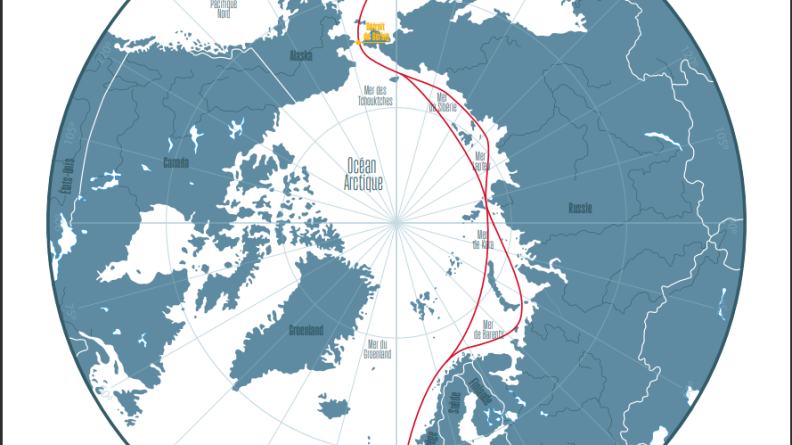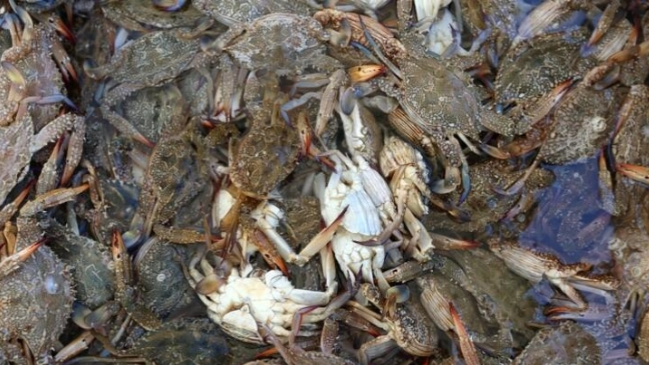The Northeast Passage, discussed since the 17th century by navigators as one of the fastest routes connecting Europe and Asia, is on the brink of becoming a reality, serving Moscow’s geopolitical ambitions. Russia could become a crucial transit hub between the East and West, potentially reshaping global maritime traffic. However, behind the myths, is this project too ambitious for Russia’s capabilities?
Stretching over 3,500 miles, the Northeast Passage will connect the Barents Sea to the Sea of Okhotsk, passing through the Bering Strait, and running along the northern coast of Russia, an area long neglected. One prevailing myth highlights the « opportunity created by climate change » for this maritime route. Indeed, the Arctic is often cited as one of the territories that could « benefit » from global temperature increases, with the melting of ice allowing for better navigation beyond a certain latitude. From a purely meteorological perspective, this argument holds some merit – the Arctic ice cap continues to shrink due to climate change, potentially freeing up navigation routes in the Northern Seas. However, this argument is highly misleading when considering the broader consequences of climate change.
The melting of sea ice is accompanied by two phenomena, one at sea and the other on land, which could make navigating the Northeast Passage just as complex as before. First, at sea, the increase in extreme weather events is a key effect of climate change, observable worldwide: storms, massive flooding, heatwaves, and extreme temperature episodes are becoming more frequent. In northern Russia, the growing intensity of storms could make navigation just as complex and dangerous as it was in the past. On land, the rise in temperatures is leading to the thawing of permafrost, which weakens the soils supporting infrastructure along the route. In 2020, in Norilsk, the collapse of soil above an oil reservoir, caused by the softening of the permafrost, led to a regional ecological disaster. Thus, navigation systems, ports, liquefied natural gas (LNG) terminals, and other infrastructure designed to ensure the functionality of the route are directly threatened by climate change, strongly challenging the idea of an « opportunity » linked to ice melt.
These climatic challenges point to the colossal investment Russia needs to make to address these extreme phenomena, which are only intensifying. However, Russia, under economic sanctions and cut off from many Western technologies, has no choice but to turn to its Chinese neighbor for support.
China’s Growing Presence
More than Russia, it is China that is particularly interested in the Northeast Passage, primarily for economic reasons – shortening the maritime route from China to Europe by avoiding the Indian Ocean and the Suez Canal – and, more distantly, for geopolitical reasons, with an additional access point to the West for its naval forces. China continuously renews its interest in this route, especially in light of tensions with Taiwan that could complicate the route for Chinese commercial vessels to the South China Sea. Chinese shipowners are eager to invest in this major Russian project, as evidenced by the infrastructure investment agreement signed in June 2024 at the St. Petersburg International Economic Forum. This agreement goes beyond simple maritime traffic issues, as China plans to become the primary supplier of transit control technologies, including low-orbit satellite constellations for telecommunications in the Arctic region.

For China, self-proclaimed as a « near-Arctic state, » firmly implanting itself in Russian infrastructure, imposing its navigation control software, telecommunications standards, and the financial and technological participation of its state-owned enterprises essentially gives it indirect control. It is no coincidence that Beijing has secured technical assistance from Moscow for the construction of nuclear-powered icebreakers, a technology previously tightly controlled by Rosatom.
Source: Defense



